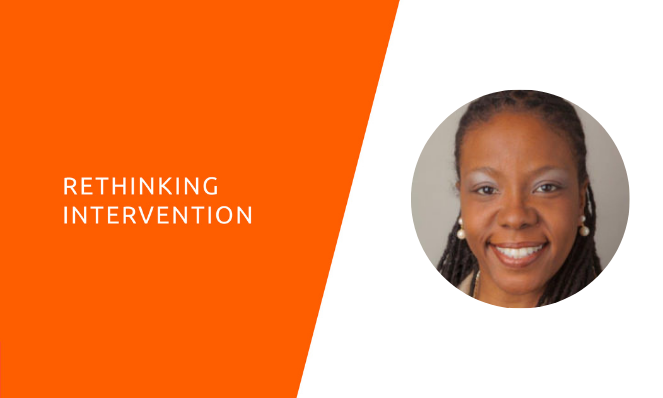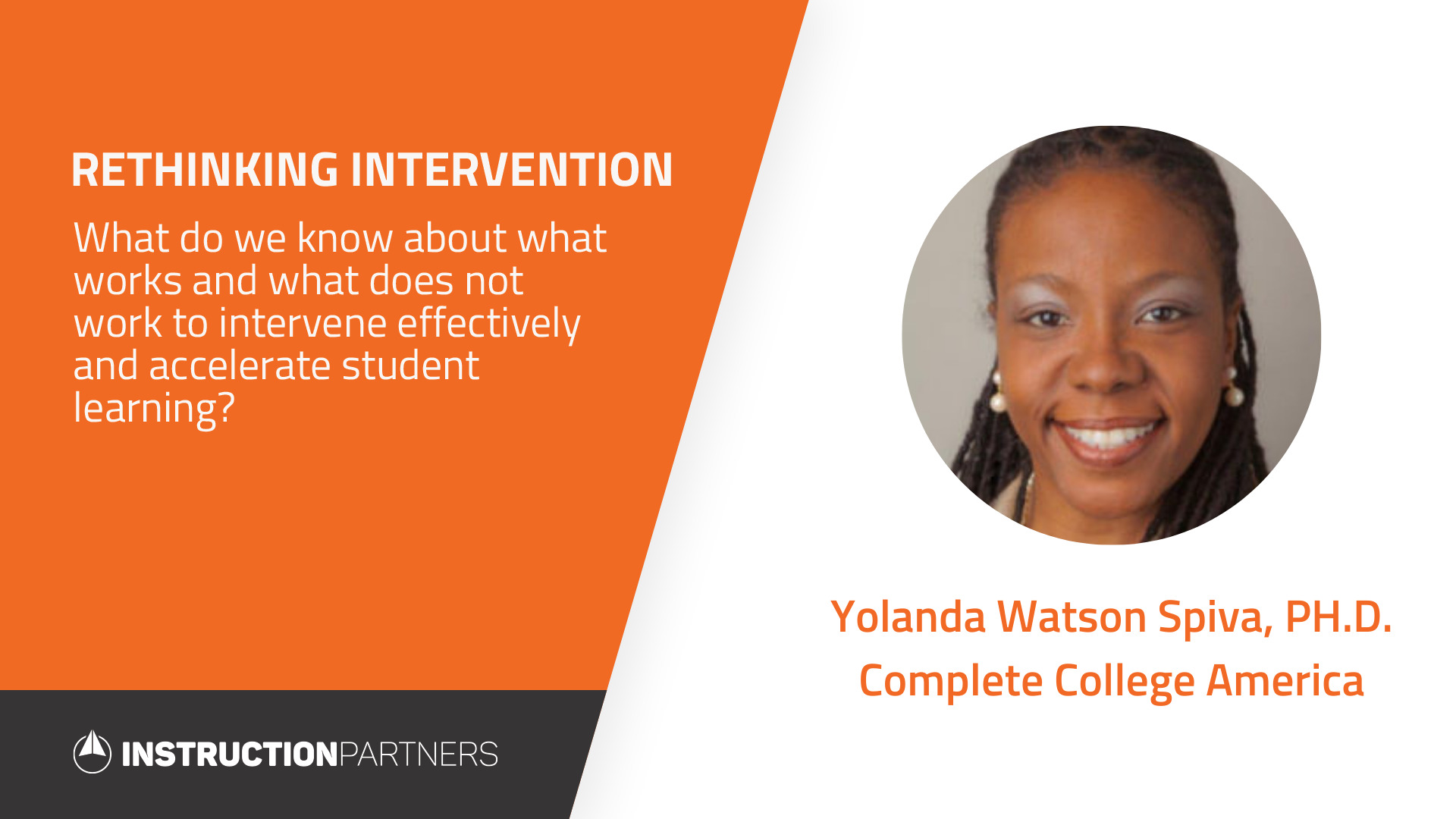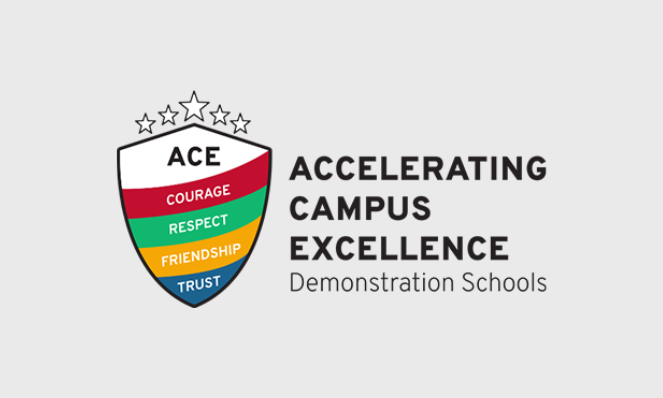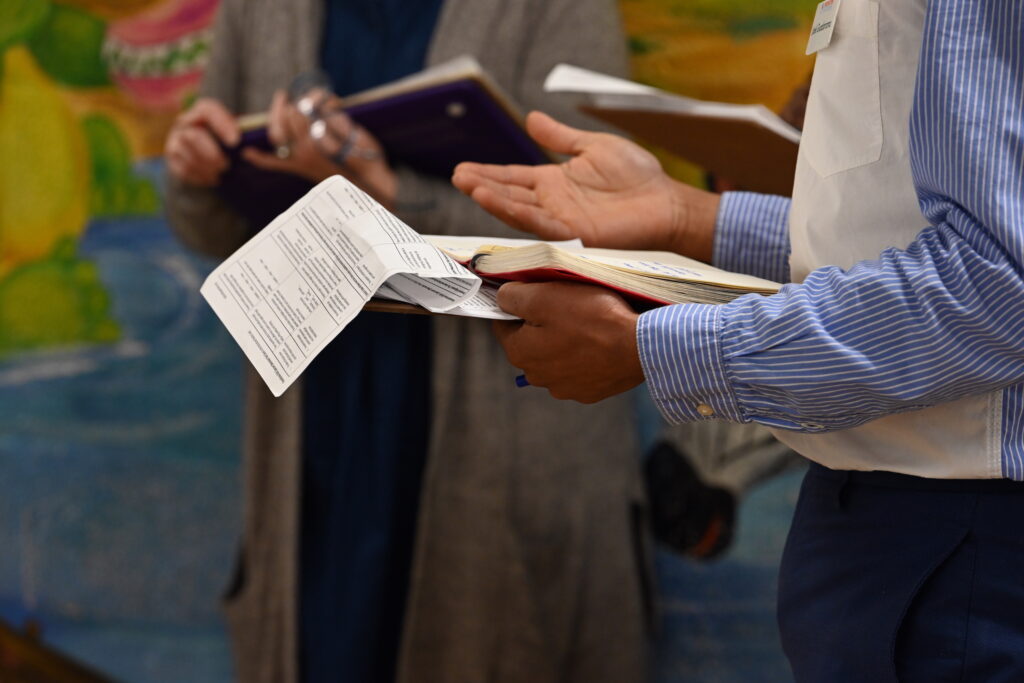
Dr. Yolanda Watson Spiva, Complete College America
Dr. Yolanda Watson Spiva serves as the President of Complete College America (CCA). CCA is a bold national advocate for dramatically increasing college completion rates and closing equity gaps by working with states, systems, institutions, and partners to scale highly effective structural reforms and promote policies that improve student success.
Dr. Spiva and Emily Freitag discussed the benefits of the corequisite strategy in higher education, and how those strategies could apply to K–12 intervention.
Watch the full conversation or read the abridged Q&A below.

EF: Please begin with a story from your own journey as a learner and share what that has taught you about learning.
YS: We had a long term sub in my fourth-grade year. She was so warm and kind. We had a reading contest that year and for every book that we read, we’d write the book name and author on a little cutout of a train, and she would string them along the classroom. The winner of this reading contest would get to have pizza with the teacher, and I won this reading contest. This was my first time actually, outside of school, going somewhere with a teacher and having a conversation. Ironically, my mom was a teacher, but this was a person who took an interest in me and validated my love for reading with this pizza prize. The real prize was this engagement with this teacher, the validation. I was a confident learner, but I do think it validated why reading was important, and that I was on the right path, and that there was something good about my connection to reading. And when I think about the fact that this was a long term sub—it also showed her commitment, that she treated this classroom as if it was her actual classroom, and she made it her own. When I think back to my elementary years, I think about that with fondness.
EF: That’s a great story. We’re so glad to have you on the series because we have so much to learn from higher education as we in K–12 education think about what to do to support students, and particularly students with unfinished learning. From your experience, what have you seen works in the job of advancing student learning with attention to students with unfinished learning?
YS: Personally and professionally, I strongly advocate for what we call “corequisite education.” Essentially, what we’re trying to do is to make sure that students who have unfinished learning actually start as college students when they get to the college campus. No more paying for the prerequisites that don’t have any college credit, where students are losing resources that could be used to advance their learning toward a degree. We look at that first year as being the real momentum year where they pick up steam and they really feel confident as learners. At the higher educational level, when they have 2–3 courses in their first semester, if they have to repeat a remedial education course, they do not feel connected to the college experience and they’re more likely to stop out. Corequisite education comes in different incarnations, but it basically adds a laboratory course that helps to supplement education. All of the courses are still for college credit, and then there are supplements, either through tutoring, labs, or other ways to make sure students get what they need.
You talked about learning from higher ed, I also think higher ed can learn from K–12. We have a symbiotic relationship as far as I’m concerned. We spent too much time pointing fingers and placing blame on where things didn’t happen. The shift now is to look at our own organizations and institutions—the structure of higher ed and the structure of K–12, and where we may have missed the mark because we were too focused on what we call “student deficits” as opposed to where our system has broken down and not served these students well. I think the interrogation of our systems will help us better serve the students. So how do we now shift a structure and a system that’s embedded? How do we shift to being more student-centric? When you do that, all types of new opportunities open up, not just for the institution, but also for the student. If the focus remains on the student at all times, in terms of their experiences and then getting to completion of a degree, you can’t lose.
EF: Tell us a little bit more about the journey to discovering the corequisite concept.
YS: There’s been a lot of research that has shown that students are more likely to stop out if they are not engaged with the higher education endeavor. A lot of what makes students successful in college is their connection to the experience, being able to see themselves as completers. You know this with high school dropouts, that typically around grade 5, students begin to toy with the notion of, “Am I a learner?” In middle school, they’ll begin to have further erosion around themselves as a learner, especially if that’s what all of the external stimuli tell them, and then by high school, we’ll see a dropout. It’s the same thing in college when you erode students’ sense of self as a college student. Because of the fact that we have really abdicated this in loco parentis doctrine around who’s helping students in college, we have college students who are 17 or 18 years old making decisions about the rest of their lives, even though brain development research tells us your brain isn’t really fully developed until you are about 26 years old.
Beyond the corequisite, we also have a strategy called “purpose first,” where we really talk about helping students understand what their purpose is and how that relates to the choice of major and the type of career that they would like to engage in. There are a number of reasons why corequisites are important that go beyond the efficiency of accumulating credits. There’s a psychology associated with it in terms of how students see themselves. People think that colleges make a lot of money off of prerequisite courses, and we can argue about that, but I don’t think any college is placing students into prerequisite courses because they want to make money. We have long understood the notion that students with unfinished learning may need some additional support, right? I think the only difference is the “how.” From the original evolution of remedial education, what’s happened is that, unfortunately, it hasn’t had the intended impact or outcome. I think that’s part of the evolution of how corequisites came to be. We still have the same goal in mind, but we’re now asking: How do we do that in a different way that immediately engages a student, helps to continue to elevate momentum, and doesn’t get them out of the game early on?
EF: Can you give a concrete picture of what corequisites can look like? Let’s anchor to a common former remedial course, like remedial math. How has the vision for that course changed?
YS: It can take many forms. I will give you an example from developmental math. You have that traditional course. If you’re doing your classes on Monday, Wednesday, and Friday, for this traditional math course, then Tuesday and Thursday could be an additional laboratory where the student actually goes to the math lab. It could be facilitated by the formerly remedial course instructor who is overseeing students, and it could be computer-based learning. It’s self-paced, they’re able to engage with software that will tell them why they got the problem wrong, it will help them to continue to go back and earn points for getting the correct answer, and they can access the professor or the instructor in that class. Essentially, they’re still staying on pace with their regular course. When there’s an assessment, the instructor is sharing that information with the lab instructor to make sure that, “Okay, this week Emily needs to work on whatever the deficit area is.” It’s very personalized. The course is synchronous learning, but the laboratory is more personalized to where your deficits are. In traditional developmental or remedial education, it’s one size fits all. You may be strong in some areas and weak in others and yet you’re in a developmental education course that is basically assuming you don’t have any of the strengths to take this course. This model is more asset-based and focused on strengths and addressing areas where you need some support in real-time. That is one example, and there are many of them.
EF: Is the Monday-Wednesday-Friday course designed together with the Tuesday-Thursday lab support? Are the instructors working to make sure that they’re making connection points?
YS: Yes, there has to be a conversation. The laboratory instructor and the regular course faculty have to make sure that they’re aligned. While you’re going back with a student to address some issues, you’re still helping them with where they are in the actual syllabus. The conversations have to be robust. Typically, the faculty member already knows who’s more likely to be a candidate for the lab, the same way we take assessments that help us know whether students should be in developmental education.
EF: And is that placement test the same? Such as Accuplacer?
YS: Yes, I’ll say that a lot of institutions are still using the Accuplacer and Compass exams—but there are some institutions that are now saying they’re moving away from them.
EF: Why are they moving away?
YS: Some of the feedback that I’ve heard is that they don’t feel like it’s as accurate a measure on what a student’s capabilities are. Some institutions are doing away with all placement tests, they feel like standardized tests have biases. I don’t think it’s about the test, I think it’s more about how you utilize the information you get from the test. A one-size-fits-all response isn’t merited here, but I would say that if you’re taking data from the Accuplacer or the Compass, you utilize it to see where a student could have some unfinished learning, but you don’t remediate or penalize them for not having that capacity. What you do is to say, “Okay, we recognize this, but we believe in you as a learner.” Going back to the self-confidence building piece, because you can’t leave that out of the conversation.
I think that when a student goes to the lab, the lab seems natural. When you’re in a course it doesn’t count for any credit, that doesn’t seem normal to a college student.
EF: Your point about psychology is really thematically linked to a lot of the other conversations we’ve had about how powerful identity and motivation are to the preconditions for learning.
Is there anything more you can tell us about the impact you’re seeing across higher ed in places that are doing this?
YS: We have a publication coming out and we’re going to be giving some examples where it’s working really well. I can tell you that in Tennessee, Georgia, Colorado, California, and Hawaii, there are some places that have just knocked it out of the park. One of our strategies is Fifteen to Finish, which essentially encourages institutions to align their programs of study to a 120-credit-hour requirement, which equates to about 15 credits per term on a semester system, and you can flex it if you’re on a different type of schedule. This goes back to the momentum piece and students feeling engaged. If a student is taking nine credits per semester and you have a 136-credit-hour requirement for your program, it’s going to take forever to finish.
We’ve had many institutions look at the program of study and ask, What do we really need? What’s most important? If we pare it down to 120 credits, now we can fit this into 15 credit hours per term, or 30 credits per year over four years, and you can finish on time. Folks often ask us why finishing on time matters. It may not matter if we think students have time to tiptoe through the tulips, but they don’t. The student of today needs to earn money, make a living, provide for their families, and provide for themselves. This is not learning for learning’s sake. They need it. And if you have this sort of a guardrail, where there’s an expectation that you should complete 30 hours per year, it gives them a north star. This is why corequisite also fits, because if they know they need to complete 30 credit hours and yet they’re in a developmental course that doesn’t bear any credit, they’re asking, “How can I meet my 30-hour credit requirement if I’m taking courses that don’t bear any credit?” These sorts of guardrails help to empower the student. I think we’ve gotten to the point where we’ve given so much latitude to students that we’ve forgotten the fact that they do still need some direction and guardrails. And so I think ultimately, as we look at the higher ed landscape, we continue to learn and do things differently and are not afraid to make changes. You mentioned the education reform movement earlier, and I know folks are tired or fatigued with the word “reform,” but I do think because we’re looking at systems that have been in place for hundreds of years, we kind of have to look at what a new model looks like for students’ success.
EF: Is there anything else that we know doesn’t work? You’ve seen much of what has been attempted—are there things that were good ideas, but actually didn’t bear out?
YS: I would frame it a little bit different to say that I think we need to listen to students more. Their feelings and feedback about their experience are relevant. I think we’ve sort of taken a “sage on the stage” mentality when it comes to students as opposed to being more Socratic about this and learning from what our students have to say. So, what’s not worked is us thinking we have all the answers. Our students, whether it’s a student that’s acting out, that’s data, that’s information, whether it’s a student who’s having a social issue, whether it’s hunger or displacement from their home, that’s information. It’s that sort of information that tells us we might need to make sure there’s a food pantry in the school district. This information tells us we might need to implement an after school program. This data tells us we might need to have an early childhood program for pre–K. If you think about the best programs that have evolved over time, they came from information that we got from students, either directly or indirectly. We should continue to listen to our students—tap into them, understand their experience, and not be afraid to then develop policies and programs that are responsive to that.


